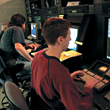Steve Zaidman sighs when asked why the Federal Aviation Administration continues to take heat over its plans for modernizing the country's air traffic management systems. As associate administrator for research and acquisitions, Zaidman is responsible for overseeing the agency's efforts to upgrade the air traffic control system and associated computers, networks and radar that ensure safe and efficient travel for the 600 million passengers who annually pass through U.S. airports.Zaidman can tick off the FAA's achievements: installing automated weather services; replacing the runway incursion systems, cutting incidents dramatically; installing Doppler radar to warn against wind sheer; and replacing just about every piece of hardware in the 20 air traffic control centers."None of these things seem to count perceptively, and I'm not sure why," he said, slumping in his chair and appearing genuinely perplexed. "We're going to need a lot more successes to convince people we've turned the corner."The FAA's critics, including Congress and pilot and air traffic controller unions, complain the agency has mismanaged projects and is slow to adopt new technologies and solutions. As recently as Feb. 22, the Transportation Department inspector general identified 20 major modernization programs that are behind schedule, over budget or both. Most notable among them are the Wide Area Augmentation System, or WAAS, whose price tag has risen from $892 million to $2.9 billion, and the Standard Terminal Automation Replacement System, called STARS, which has increased from $940 million to $1.6 billion.Zaidman does not downplay the FAA's past problems or the challenges it faces today. But he contends the agency is making significant progress on important programs, including WAAS and STARS. The coming year, perhaps more than any other in recent memory, will provide opportunities for the FAA to demonstrate that it has, indeed, turned the corner. The Telecommunications Infrastructure contract should be awarded in June. The request for proposal for the En Route Automation Modernization program, or ERAM, was released March 15, with an award expected in April 2003. And the first fully functional WAAS system is to be installed in Philadelphia in November after years of delay.Like Zaidman, the contractors working on these projects and vying for new work are confident the FAA can prove its critics wrong."I worked on the Apollo program and the space shuttle program, [and] the complexity of air traffic control programs is a magnitude of difficulty more," said Jack Clemons, senior vice president of strategic programs in Lockheed Martin Corp.'s Air Traffic Management unit. "One can always find fault for how long it takes to learn the lesson, or how much it cost or who was responsible, but I think there are things [the FAA] can be proud of. We certainly are."XXXSPLITXXX-As part of the Department of Transportation, the FAA's mandate includes establishing air-worthiness standards for aircraft, controlling and regulating air traffic, promulgating safety rules and investigating accidents, among other responsibilities. The agency has some 1,000 staffed facilities throughout the country and U.S. territories. It also maintains about 23,000 facilities that together comprise what is called the National Airspace System. Much of the agency's modernization efforts are guided by its Operational Evolution Plan, unveiled in June 2001, which provides a comprehensive road map for more than 100 automation programs to be done over 10 years to maximize air traffic capacity. While the nation's airports and air traffic control systems have always attracted widespread attention, the Sept. 11 terrorist attacks have created an even greater sense of urgency for the FAA to show it can effectively carry out the ambitious master plan.The first big contract on the horizon is FTI, the FAA Telecommunications Infrastructure program, with the June award going to one of three competitors: Lockheed Martin, Bethesda, Md.; Harris Corp., Melbourne, Fla.; or WorldCom Inc., Clinton, Miss. FTI represents a complete overhaul of the agency's telecommunications equipment and services that will "take advantage of the current telecom system in this country," Zaidman said. The contract is potentially worth up to $1.9 billion over 15 years. The program was delayed last year when, after Sept. 11, the FAA changed the original RFP to boost security requirements. A second communications contract in the queue is Nexcom, the next-generation air-to-ground radio contract, involving the replacement of more than 46,000 radios with new multimode radios. The FAA awarded a $580 million contract to ITT Industries in July 2001 for development of the multimode digital radios for air-to-ground communications. However, the agency will issue a separate RFP in April for a prototype for the ground systems to tie into the radios, voice switching and control systems, automation systems and all legacy systems still in place, said Joe Sleiman, director of business development, information and transportation systems with Harris' government division, which plans to compete for the business.The WAAS contract is held by Raytheon Co. of Lexington, Mass., which will install the first system in Philadelphia. The program has been plagued by cost overruns and delays, and the inspector general's report concluded the program will have less functionality than originally planned. The follow-on Local Area Augmentation System project is intended to address the performance shortfall, allowing aircraft to use the global positioning system to make landings in even the worst weather conditions.Raytheon and Honeywell are competing for the LAAS contract, which the inspector general's report estimated at $720 million. To speed development and keep the program on track, the two companies are starting development in advance of the RFP release."We signed an agreement with the FAA that we'd continue developing the technology on our dime," said Bob Meyer, business development manager for FAA and defense programs in Raytheon's Air Traffic Control unit. "The FAA [has] monitored our development and prepared for certification."Meyer said Raytheon was willing to undertake the upfront development expense without knowing if it would win the contract because the FAA certification itself has market value. "The carrot was if you're certified in the United States, then you're gold in the world markets," he said.One of the biggest contracts on the horizon is ERAM, the En Route Automation Modernization program. ERAM will replace the decades-old software that controls high-altitude flights through U.S. air space at the 20 air traffic control centers.The FAA has upgraded elements of the en route automation system, but it is still using software designed in the 1960s and 1970s, said Sue Corcoran, vice president of North American programs for Lockheed Martin ATM. "[The en route] system was designed using very old software methodologies, and it is very, very difficult to upgrade or add enhancements to and maintain,"" she said.The RFP for ERAM was released March 15, more than a year behind schedule. The FAA tried in February 2001 to award the contract to Lockheed Martin without considering other bidders, but Raytheon protested the action, and a judge ruled the agency had been premature in awarding the contract. As a result, it appears ERAM will go through a competitive process, and a final award is not expected for a year.Responses to the ERAM request for proposal are due in two rounds, on March 29 and April 15. Lockheed Martin announced March 25 that it will team with systems integration heavyweights Computer Sciences Corp., Boeing, Harris and Northrop Grumman Corp.'s IT unit.Raytheon is still evaluating its need for teaming, spokeswoman Blanche Necessary said.IT contracts also play a large role on the administrative side of the FAA. An RFP is expected in January 2003 for the Broad Information Technology Services II contract, one of the agency's biggest non-air-traffic control projects. The five-year contract is worth an estimated $1.3 billion to provide a wide range of IT services at FAA facilities throughout the United States. To date, more than a dozen companies have expressed interest in bidding.XXXSPLITXXX-Although the FAA and its contractors say they have come a long way toward solving earlier problems, the agency still faces many hurdles. A Transportation Department official, who spoke on condition of anonymity, said the Operational Evolution Plan requires an extraordinary level of integration. The FAA will have to keep close tabs on all projects in the blueprint to keep them on track, even though, historically, it has a poor track record in that regard, he said.The OEP has little room for changed circumstances, the official said. For instance, because of the events of Sept. 11, the FAA will have to maintain ground-based, long-distance radar facilities, many of which use obsolete equipment. Before the attacks, the agency had planned to phase out the facilities, so there is no money for them in the fiscal 2003 budget request.Similarly, the FAA had planned to enhance terminal security before Sept. 11, but now it faces a drastically accelerated schedule.Moreover, while the new Transportation Safety Agency is responsible for purchasing security solutions, such as explosive detection systems, the FAA has to pay for terminal renovations to accommodate the equipment.The money to support these needs will have to come from somewhere, likely jeopardizing OEP program schedules, the official said.And individual programs could fall victim to the kinds of problems that plagued earlier projects. ERAM has the "greatest potential for problems," the official said, because the agency has yet to determine what technologies are already available, as opposed to the capabilities the agency wants to include but that have yet to be invented."We don't want to invent and roll out at the same time," he said.In December 2001, the inspector general's office announced it will review the OEP. It will assess the costs associated with implementing the long-range plan, evaluate the critical path issues for achieving anticipated capacity benefits and examine how the events of Sept. 11, the economic downturn and new security requirements have affected milestones and budgets for key OEP elements. The report is expected to be released this summer.The FAA already understands that changed circumstances will ripple through the OEP, said Dan Mehan, the agency's chief information officer. For example, several programs in the plan depend on commercial airlines making investments in new avionics, but the downturn in air travel will delay their ability ? and their willingness ? to spend the money."In a year or so, we'll get back on track with growth," Mehan said. "Does [the OEP] have some modifications in light of it? Yes."XXXSPLITXXX-Past experience has shown that for the FAA's modernization program to succeed, the agency must get buy-in from a diverse range of constituencies, including unions, contractors, commercial airlines, local airport authorities and the military, the FAA's single biggest customer.These groups are reserving judgment on Administrator Jane Garvey's efforts to build consensus, in part because of past conflicts. The STARS program, for example, hit a major stumbling block with the air traffic controllers' union over Raytheon's initial display screen design. The agency's attention to "human factors" has not always been very good, union members said.Another reason for skepticism among these constituencies and on Capitol Hill arises from the agency's fiasco almost a decade ago with the Advanced Automation System. The FAA spent hundreds of millions of dollars on the vast systems integration project, but finally had to pull the plug with little to show for it.Rep. John Mica, R-Fla., chairman of the House Transportation and Infrastructure subcommittee on aviation, and other committee members continue to cite the AAS failure as reason to monitor the FAA's progress on the successor program, which is STARS."I think [the FAA] will not get let off the hook until all the programs that were supposed to be covered by AAS have been covered," said Lockheed Martin's Clemons.But Corcoran is optimistic that Garvey is making headway in building support among the different stakeholders. One focus of the OEP is getting in sync with all users of the U.S. aviation system and making sure they agree with the priorities it sets, she said.Much of the responsibility for executing the FAA's ambitious plans will fall on Zaidman's shoulders. He tries to be realistic about expectations."Bad news travels at the speed of light, and good news travels like a glacier," Zaidman said. "We're still rounding the curve post-AAS, and people's perceptions are very chiseled."XXXSPLITXXX-The FAA's purview is vast and complex. The agency regulates the airlines, runs the air traffic control system, certifies air-worthiness of aircraft, establishes safety rules and investigates accidents.To accomplish its mission the agency has 50,359 employees and operates the following:? 1,000 staffed facilities? 23,000 facilities that are part of the National Airspace System? 12 regional offices and centers? 5 air route traffic control centers? 352 airport traffic control towers? 61 automated flight service stations? 3 automated international flight service stations? 185 terminal radar approach control facilitiesXXXSPLITXXX-Several FAA projects have fallen behind schedule by years and are millions of dollars over original cost estimates. The delays and overruns have caught the eye of Congress and other critics. These five were singled out by the Transportation Department inspector general. Satellite-based navigation $892.4 million $2.9 billion 1998-2001 2003 ? to be determined Raytheon Co. Controller displays and computer equipment $940 million $1.7 billion 1998-2005 2002-2010 Raytheon Co. Digital radar $752.9 million $916.2 million 2000-2005 2002-2008 GTSI and Sun Microsystems Weather products for air traffic control $126.4 million $155.4 million 1999-2000 2002 Harris Corp. Prevention of runway accidents $59.8 million $151.7 million 1994-1996 2001-2003 Northrop Grumman Corp.XXXSPLITXXX-The Boeing Co. caught many industry experts by surprise when it formed a division in late 2000 to design a satellite-based air traffic control system that would succeed the Federal Aviation Administration's 10-year Operational Evolution Plan.Now based in Chicago after decades in Seattle, Boeing has plowed ahead with its plans, and it released Feb. 28 a set of high-level system performance requirements for a future air transportation system. The rules were derived from a collaboration among Boeing, the FAA, commercial carriers, military representatives, general aviation, service providers, support and policy organizations and other suppliers.Boeing's commitment to this industry niche was further demonstrated March 21 when it formally opened an office for 100 employees of the air traffic management division in McLean, Va."Our overall business unit activity is focused on trying to define the architecture for the future," said Dennis Muilenburg, vice president of engineering for Boeing ATM. "Part of that is understanding the requirements up front."Jack Clemons, senior vice president of strategic programs in Lockheed Martin Corp.'s air traffic management unit, said Boeing can contribute to the next-generation solution to air traffic capacity limitations."I think they can bring a perspective to the solution that is fresh and new; they have the cockpit, [and] we and Raytheon are sort of the ground-based part of this," Clemons said. But he also said he believes Boeing has learned from the rest of the industry that the challenge "is a lot more complicated, a lot more difficult than it looked from the outside and not just a question of applying new technology."The FAA's Steve Zaidman, associate administrator for research and acquisitions, said the agency welcomes Boeing's initiative, especially since it is spending its own money to develop new ideas."We have a long-term architecture in the FAA that is not too, too different from Boeing's," Zaidman said. "Boeing puts maybe more emphasis on satellite communications, navigation systems [and] surveillance systems than we would. But the end stage is conflict-free routes [and] taking advantage of automation."XXXSPLITXXX-Information technology is reshaping the Federal Aviation Administration in ways not visible to the general public. Case in point: Integic Corp. of Chantilly, Va., overhauled and automated the FAA's procedures for providing medical clearances of aircraft pilots.Some 6,000 air medical examiners worldwide are allowed to conduct flight physicals for pilots, according to Jim Fraley, the civilian business unit leader for Integic. Under the old process, physicians would fill out a form by hand for each pilot, then wait until they had two dozen or so before mailing them to the Oklahoma City data center, where the information was entered into a common database."Air medical examiners around the world now enter the data directly," Fraley said. "We get the data faster, [and] we know who the pilots are" that have been cleared.The latter information is particularly important post-Sept. 11, he said. There are three classes of airmen: commercial, small commercial (for example., crop dusters) and student pilots. All three groups require the medical certification, even just for simulator training. After the attacks, the FBI used the database in some of its investigation, though Fraley said he could not provide details.Integic also is building a medical system, called the Covered Position Decision Support System, to consolidate and automate data from the medical exams for air traffic controllers, Fraley said. Controllers can only go to regional air surgeons, who are FAA employees, he said. The United States is divided into nine regions by the FAA, and until recently there were nine different systems in place."We're rolling out to the regions right now. We will have all nine [on the system] by the end of this year, and we'll be able to manage from a central system," Fraley said.Systems integration also comes into play because the pilots' medical system and that for the air traffic controllers have to share information."You sometimes have controllers who are pilots," he said. "It means that data integrity is a huge issue."Integic sees these systems as readily transferable to several other homeland security applications at both the federal and state and local levels."We could talk to the [Federal Highway Ad-ministration] about being able to certify truck drivers," Fraley said. "The same thing goes for the maritime community [and] railroads."
On the hot seat: Steve Zaidman is the man at the Federal Aviation Administration overseeing the upgrade of air traffic control systems.
Bob Meyer, business development manager for FAA and defense programs in Raytheon's Air Traffic Control unit, shows some of the company's systems at a recent demonstration of its technologies in Washington. Raytheon is competing for a contract to upgrade software to allow aircraft to use the global positioning system to make landings.
Sue Corcoran, vice president of North American programs for Lockheed Martin Corp.'s Air Traffic Management unit, said the FAA is making headway in building support for its modernization plan among contractors, pilots, air traffic controllers and other stakeholders.
Matt Woolley (right), an applications software engineer, and Don Ernsdorff, a software lead, work on applications that relate to FAA air traffic control equipment at Lockheed Martin Corp. in Rockville.
"Bad news travels at the speed of light, and good news travels like a glacier. We're still rounding the curve post-AAS, and people's perceptions are very chiseled." | Steve Zaidman, FAA associate administrator for research and acquisitions
"In a year or so, we'll get back on track with growth. Does [the OEP] have some modifications in light of it? Yes." | Dan Mehan, chief information officer at the FAA






